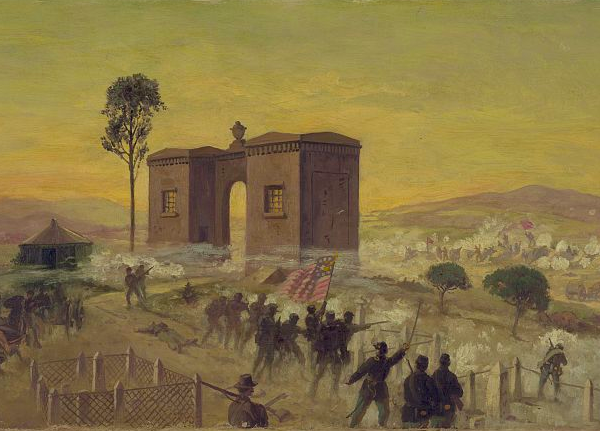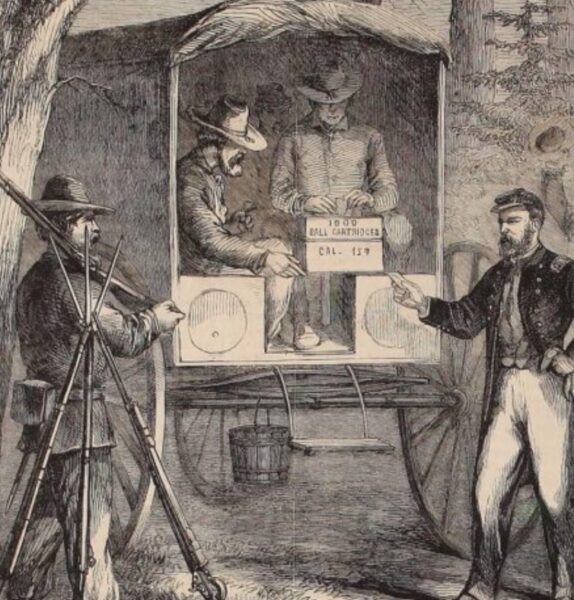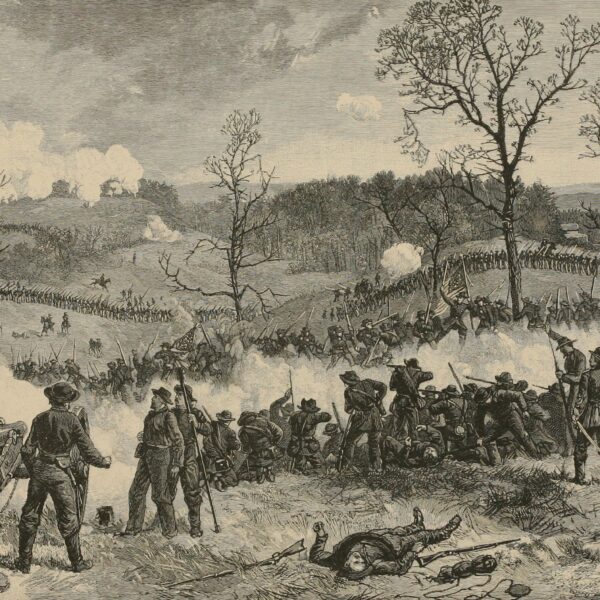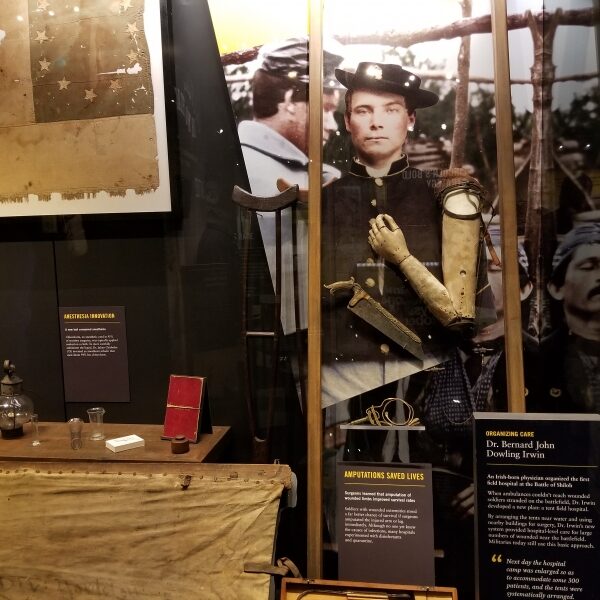“If we may believe the poets and fabulists, the idea of sailing in the air is no new one. Every school-boy knows the story of Daedalus and his son Icarus, and the wings made of feathers stuck together by wax….” So wrote the editors of Harper’s Weekly at the opening of an article titled “Sailing in the Air,” which appeared in its January 2, 1864, issue. Accompanying the article was a full-page illustration highlighting a series of aerial systems proposed by various inventors—a look, in short, at what some forward-thinkers at the time believed the future of air travel might look like. Below are the drawings of each aircraft, along with the Harper’s descriptions.
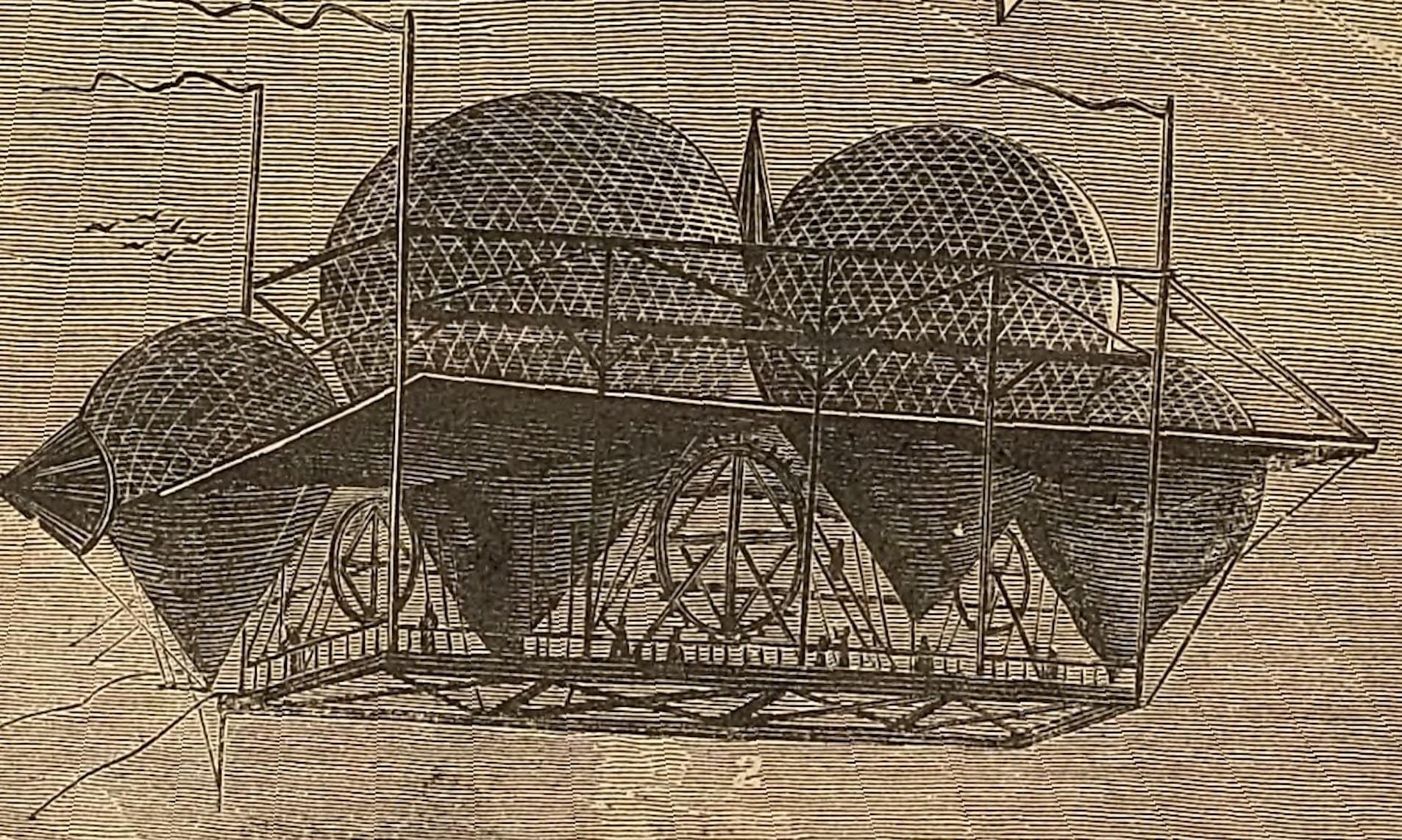
“[Petin’s system] consists of four balloons mounted on a large platform. The floor of this is made like a Venetian shutter, so as to offer more or less resistance to the ascent. Sails and ‘screws’ are the means of propulsion. This system has never been actually tried.”
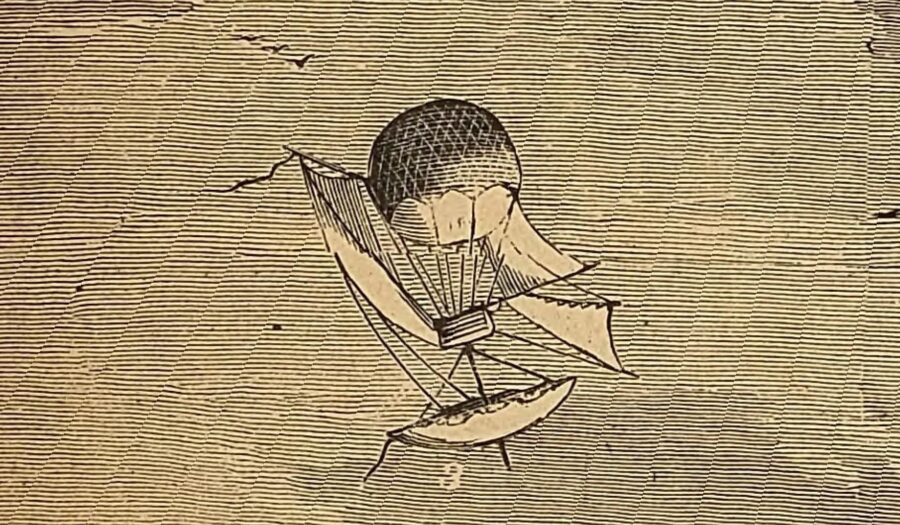
“Mr. Henin’s ‘reversed parachute’ has only sails fixed to the balloon and car. The parachute below the car is designed to moderate the rate of ascent, and to aid the action of the wind upon the sails, which are managed as on a vessel.”
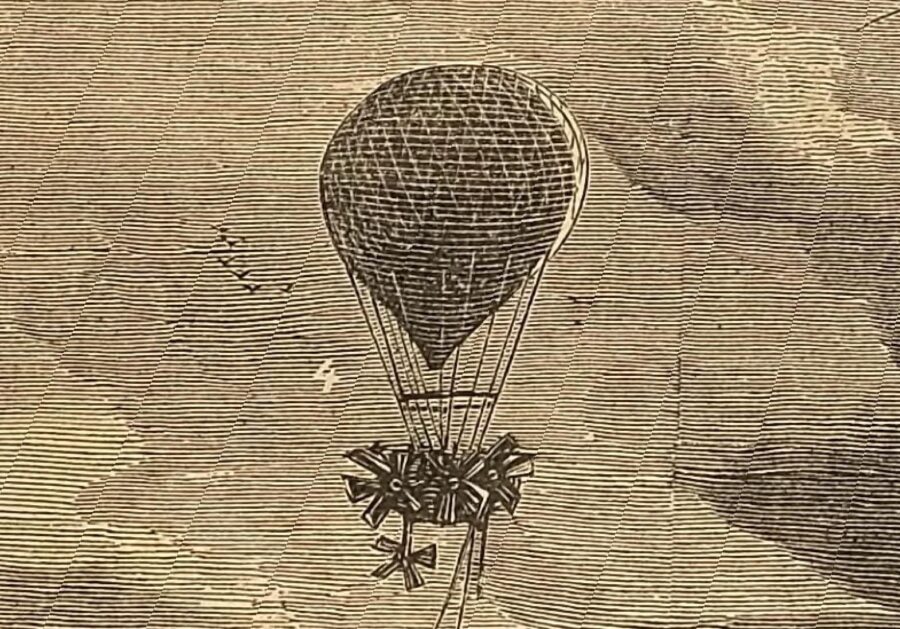
“The system of Mr. Helle is a combination of ‘fans’ and ‘screws,’ moved by a couple of men below the car.”
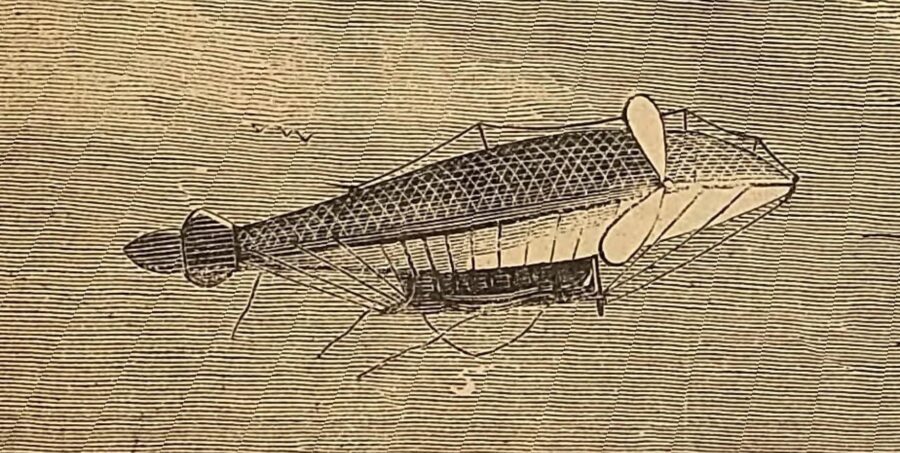
“M.M. Julien and Sanson have given up the spherical form of the balloon as presenting too large a surface, and offering too great resistance to the wind, and have adopted an elongated shape, something like that of a fish. In Julien’s balloon the ‘screws’ are placed not under the car, but at the centre of resistance, beneath the balloon. A little balloon of this kind, in which the ‘screws’ were moved by clock-work, was put in operation at the Hippodrome some years ago. It moved against the wind, and seemed to demonstrate that the fish-form was the one for aerial navigation; and many competent judges thought that with adequate motive power Julien would be able to overcome the currents of the atmosphere.”
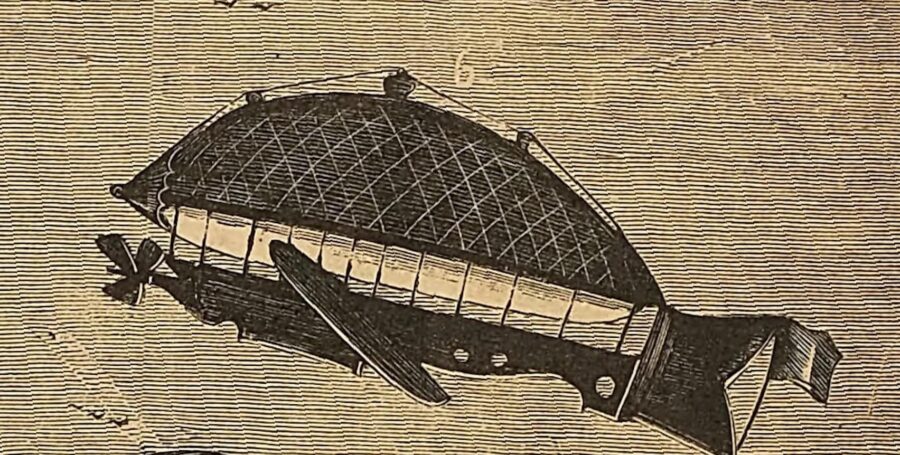
“Jarcot’s system has not, we believe, been tried practically.”
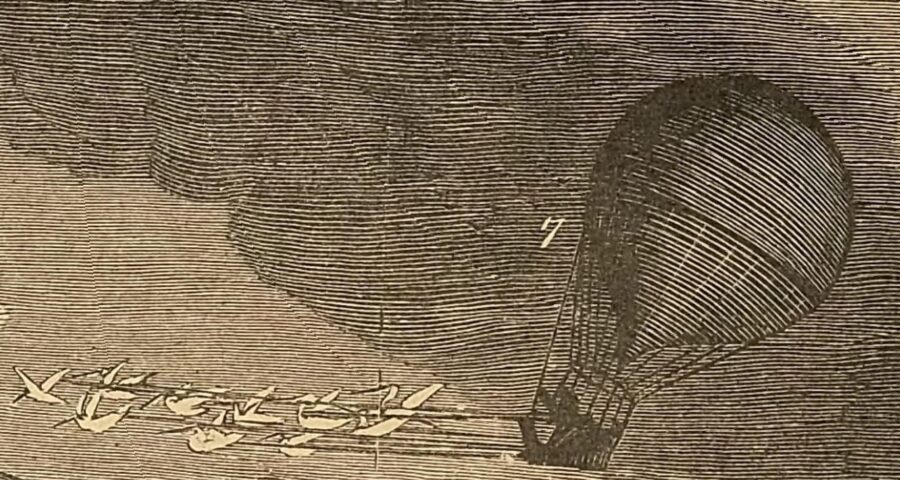
“M. Teisol’s project of a balloon drawn by birds is ingenious. If it succeeds, we shall be happy to record the fact.”
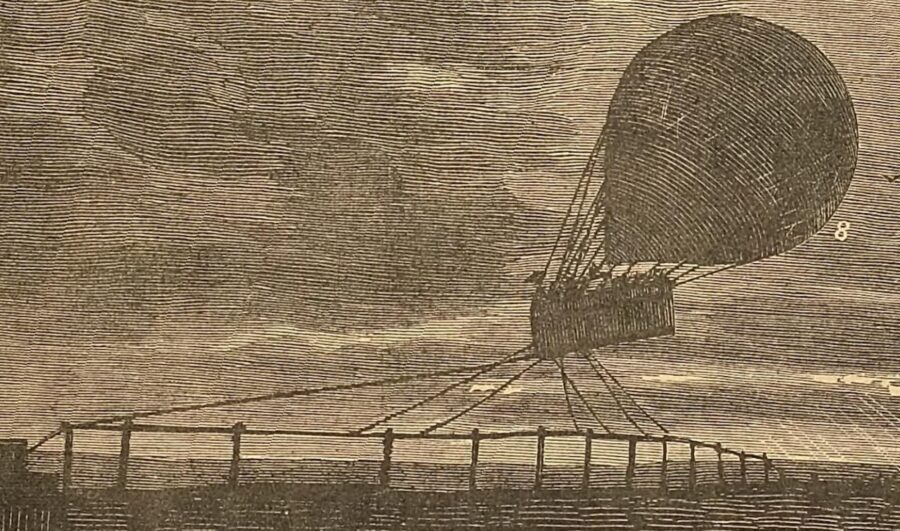
“M. Moreau-Seguin has projected a ‘captive-balloon,’ the object of which is to give timid persons the advantage of an air voyage. This is to be moved by a locomotive on land. Who knows whether this may not turn out a profitable speculation in somebody’s hands?”
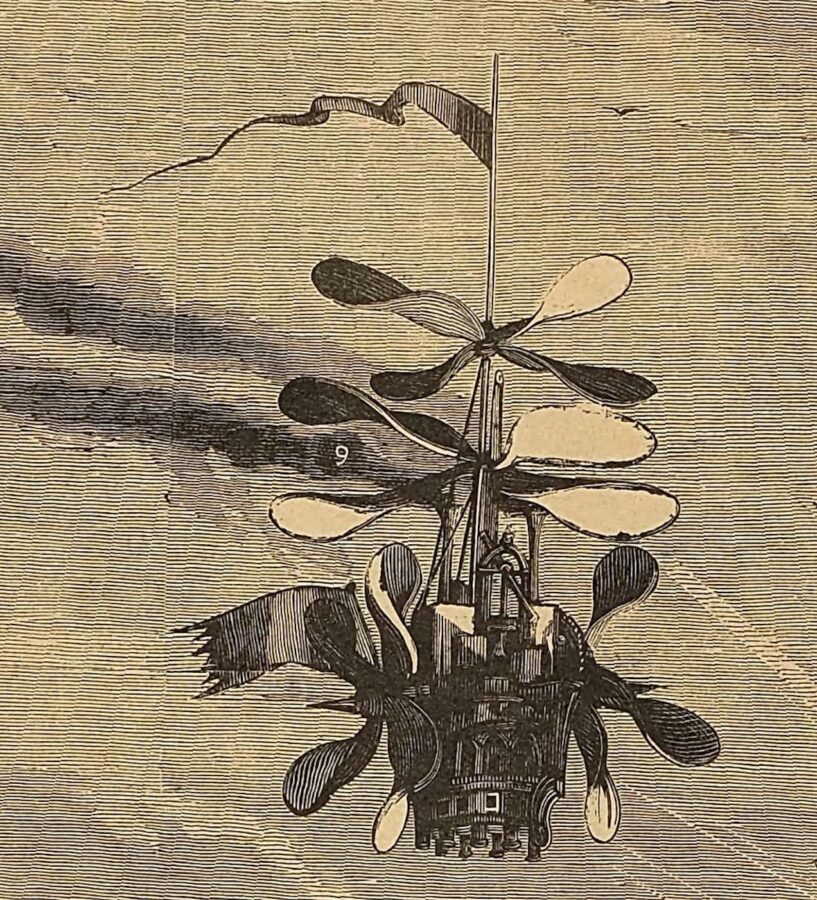
“M. Le Vicomte de Ponton d’Amecourt, finding in the great surface of a balloon the chief obstacle to aerial navigation, has propounded a system of which M. Nadar is the expounder. His … ‘Helicoptere’ is composed of two screws placed horizontally on a vertical axis. When revolving, the wings strike the air obliquely, and send the machine up. For steering there is the third screw placed horizontally, with the axis perhaps oblique to those of the vertical screws. The motive power is furnished by a steam-engine specially designed for the purpose. M. Nadar, in order to raise funds to try this system practically, is now making the tour of Europe with his monster-balloon. If he raises the funds, we shall not be sorry; if he raises the machine, we shall be more than delighted.”

